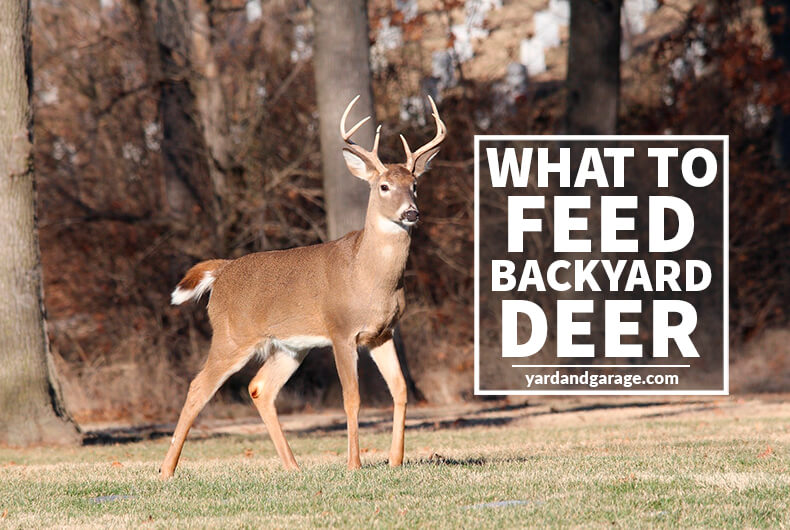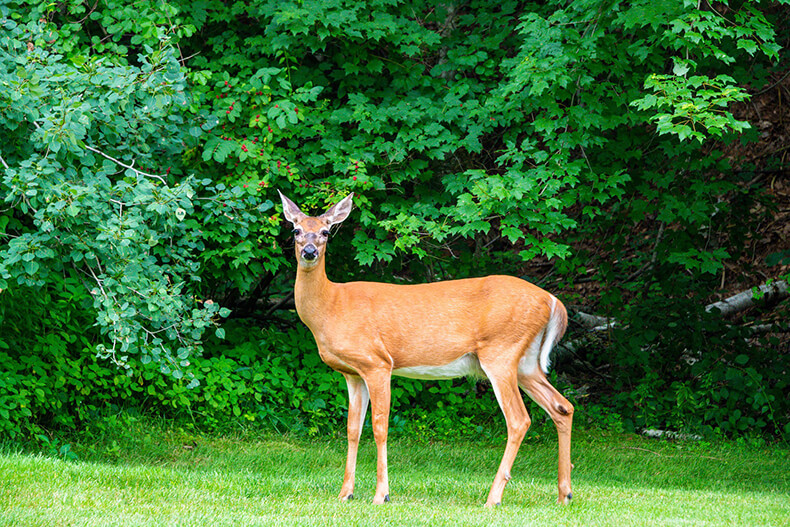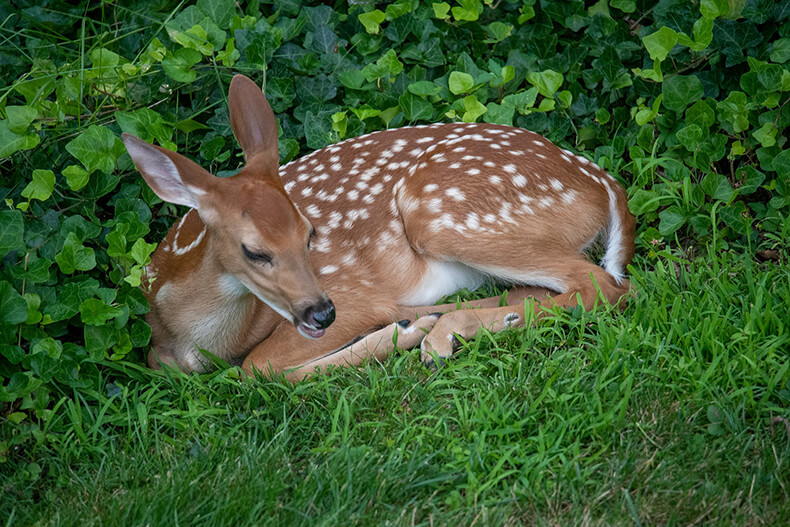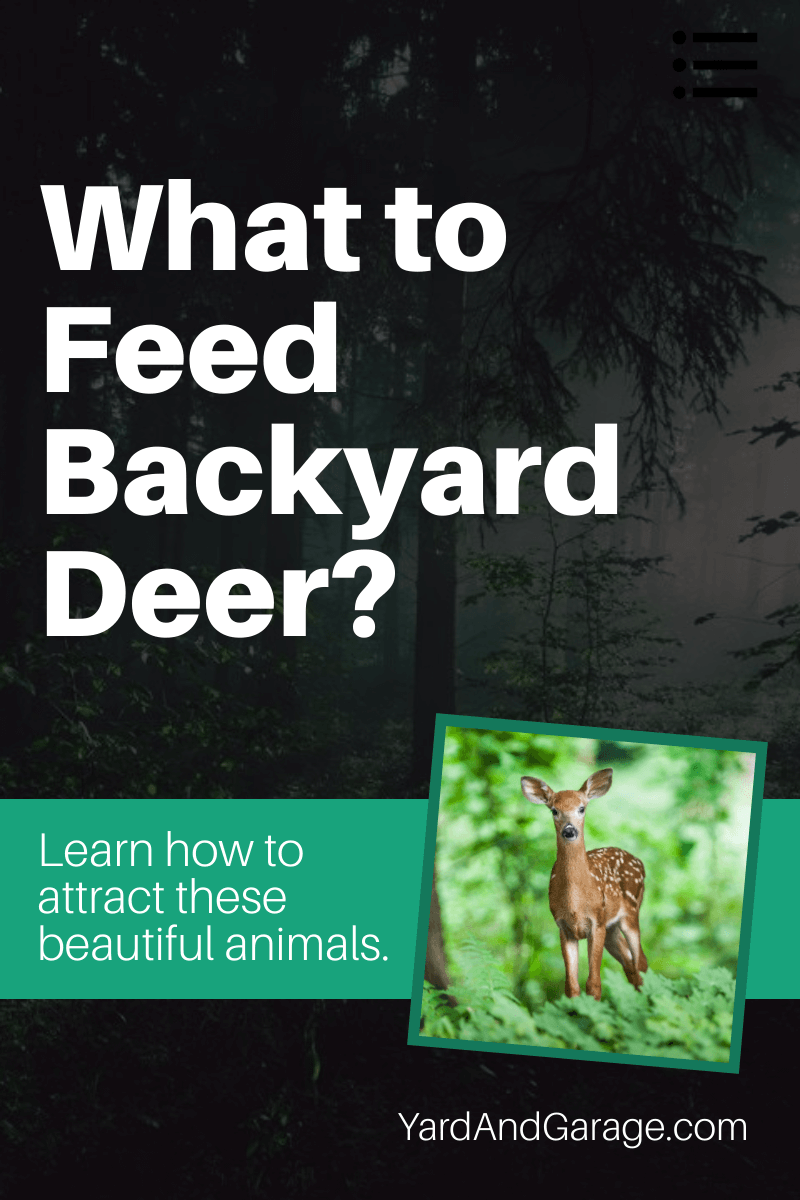
Deer are well-known for being reclusive, so it’s always exciting to see a deer in the wild. You can entice them to come close to your home, but you must offer them suitable deer feed.
For nature lovers, feeding deer in the backyard is a popular subject these days. Unfortunately, deer are notorious for having a huge appetite. You need to keep this in mind while you’re trying to get them to come into your backyard.
You’ll have more success attracting deer if you can see things from their perspective. It’s also imperative to point out that deer are interested in maximizing their resources.
Common Facts about Deer
Did you know that white-tailed deer are native to North America? They are related to elk and moose. White-tailed deer can be spotted east of the Rocky Mountains. It’s also important to mention that mule deer occupy land west of the Rocky Mountains.
These intelligent animals can adapt to a variety of habitats. They can prosper in the forest, and they can thrive in your backyard. But, to the surprise of some, deer can also live in deserts and parks.
Different subspecies of deer live throughout the country. This is one of the main reasons why they range in size. Some subspecies can weigh less than 100 pounds, while others can weigh several hundred pounds.
The climate, their diet, and many other factors influence their size. It’s fair to say that these things also have a significant impact on their size and lifespan.
What’s the lifespan of deer? Intensive research shows that their lifespan can range from two to ten years.
The Ascension of the Deer

Contrary to popular belief, deer were scarce on this continent at one point in time. Nevertheless, deer managed to do well despite being the favorite meal for savvy predators like mountain lions and bears.
At the end of the day, their success is linked to the development of our country. Early settlers were interested in expanding their territory, so they did not hesitate to cut down trees. They also killed the predators that enjoyed having deer for dinner.
Something interesting happened. Farming began to decline while suburbs were being developed. This gave gardens a chance to come to fruition. Daylilies, tulips, and many other delicious treats popped up. In return, the deer population began to explode.
Some wildlife experts believe 30 million deer are roaming America today. This has put a tremendous amount of pressure on the habits that offer their food.
It’s typical to read articles about a considerable decline in the deer population after a harsh winter. Feeding deer in the backyard seems to be the usual response from people who would love to see the deer population intact.
Let’s take a close look at some deer behavior and biology. This will help you have a deeper understanding of these fascinating creatures.
A Typical Day in the Life of a Deer
Deer are herbivores, so they look for all types of vegetation. Therefore, their diet is influenced by the season.
These highly intelligent animals enjoy eating the following:
- Flowers
- Cacti in desert areas
- Acorns and many other types of nuts
- Buds of shrubs and trees
Deer are curious and resourceful. There’s no shame in their game. They will look in garbage cans, explore your garden, and eat fruit and acorns that fall from trees.
It’s fair to say that deer have a thing for sweets. They can be seen feeding before dawn and after sunset. They typically get their rest during the afternoon.
To the surprise of many, deer only mate once a year. The breeding season typically takes place during the fall. During this time, the bucks challenge each other for a mate.
Their aggression can force them to charge at humans. This is why you need to take careful measures when you spot deer. If the bucks see you, they may be tempted to test you.
Does can birth up to three deer at a time late in the spring. Their diet and the climate determine the birth count.
The behavior of a doe with fawns makes them easy to spot. She will not be afraid to defend her young if she sees a human. The doe’s behavior is easy for novice, intermediate, and advanced outdoorsmen to interpret.
Don’t underestimate the doe’s intelligence. She may try to intimidate you by stomping her feet. If that doesn’t work, she will try to lure you away. In many cases, she will use deception to protect her offspring.
Fawns typically nurse for ten weeks. After that, they will switch to the herbivore diet.
The fawns and doe will form large herds during the winter season. Then, when the cycle starts over, the newcomers will search for their own territory.
The Advantages and Disadvantages of Feeding Deer
What to feed deer? Before we answer this question, we need to look closely at the pros and cons of feeding deer. In our humble opinion, there are only a few cons to feeding deer.
You must read the following information carefully. This will help you avoid any potential nasty surprises in the future.
Some people are under the impression that feeding deer is easy. They believe that opening the gate to deer will give them the golden opportunity to feed these amazing animals. However, there’s more involved in this fascinating activity.
Let’s begin with going over the pros.

The Pros of Allowing Deer to Come into Your Yard
Feeding deer will give you a chance to see nature at its finest. It’s a fascinating learning experience for you and your family.
The following subjects can surface while feeding deer in your backyard:
- Winter survival for deer
- Conflict between humans and wildlife
- Relationships between the predator and prey
- Doe and fawn behavior
- Lifestyles for carnivores, omnivores, and herbivores
You may have heard many wonderful stories about deer. However, there’s nothing like seeing one close-up.
If you enjoy hunting, feeding deer will make things easier for you. Instead of toiling through the forest or desert clueless, you will learn more about them. You will become familiar with their diet and whereabouts. This will put you in a prime position to take them down with your firearm.
You should consider removing some of the natural barriers that can make it difficult for deer to venture onto your land. This will ease their tension, and they will see your property as a haven for water and food.
You don’t need to be skilled in rocket science to know that hunting is not for everyone. If hunting isn’t your forte, you can lease your land to hunters. They will be more than happy to pay you for the opportunity to hunt deer on your land. This can be viewed as a win-win situation.
The Disadvantages of Inviting Deer to Your Property
Before you get the deer feed, please keep in mind that dealing with deer is challenging. If you are not ready to deal with this, you should search for another outdoor activity.
What’s the biggest con to feeding deer? You cannot restrict their diet. They will eat the feed and target your flowers.
As we stated earlier, deer have a voracious appetite. Planting deer-deterrent food may seem like a good idea, but hungry deer will stretch their limitations. They will turn their attention to anything that appeals to them.
There are some downsides to feeding deer in your backyard. For example, deer carry ticks. When deer come near your home, they will bring ticks. There’s a chance of you getting Lyme disease if you’re bitten by a tick.
Here are some other health concerns you need to be aware of:
- E. coli
- Mange
- Plague
- Giardiasis
Studies show that giving deer a well-balanced diet will keep them healthy. This will reduce your chances of getting ill. This is the primary reason why we recommend that you get a variety of foodstuffs.
We want to bring up one more point before moving forward. You should think about the conflict between deer and humans. For example, millions of collisions take place every year between automobiles and deer.
Close to 2 million animal-vehicle collisions took place back in 2018. On average, each accident totaled $3, 660. Insurance companies are not fond of forking over money to cover these accidents.
Did you know that feeding deer will reduce their natural fear for humans? Yes, it’s true. Deer are highly intelligent, and they can adapt to their environment fast.
Getting familiar with the cons will help you keep things in their proper perspective. This will keep you and the deer safe.
How to Attract Deer
Okay, we’ve covered the advantages and disadvantages that come with feeding deer in your backyard. If you’re ready to enjoy this exciting pastime, let’s look at what to feed deer.
Before you feed deer in the backyard, they will find your home before you send the invitation. They will check out your plants to see if any look tasty.
Contrary to popular belief, deer don’t have bottom incisors. Therefore, when deer chew plants, the edges will have a ragged appearance.
Here are some other signs of deer presence: scratch marks on a tree near your home, scrapped patches of bare dirt, and tracks.
During mating season, bucks are well-known for leaving their mark. This forces their competition to respect their territory.
How can you attract deer to your backyard? You can start by giving them a dependable source of water, food, and cover that will protect them from predators. Next, they will get used to your habits and activities.
Plants that Deer Eat
You should cover the bases by getting a variety of nutritious plants. This will help the deer stay healthy. You will also get a chance to make changes to your landscaping so that it will fulfill your needs and desires.
Perennial plants and trees will do well. They will provide food to your backyard visitors every year and will lead to more return visits.
Here are the trees you should consider for your backyard:
- Hawthorn
- Willow
- Apple
- Yew
- Dogwood
- Crabapple
- Cedar
Yew is toxic to humans, but deer can eat them without any difficulty. Their GI system makes it easy for them to digest the trees listed above.
Planting shrubs around your property is another good idea. Besides being an excellent food source during the winter season, they offer many nutrients.
Deer like the following bushes:
- Blueberry
- Arborvitae
- Holly
- Azalea
- Rhododendron
- Euonymus
Here are some other options for you to consider:
- Alfalfa
- English Ivy
- Vetch
- Ferns
- Strawberry
Deer are not picky eaters. Fortunately, you have many options on the table. This will make it easier for you to stock your backyard with yummy treats.
Planning Your Deer Landscaping
You don’t need a perfect patch of land to attract deer. Their foraging will take care of this and make your job easier.
Pay close attention to nature. This will help you notice what survives every year. You will also learn more about their diet.
You need to place trees and bushes around your property. This will provide more cover and protection for the deer, and they will feel more comfortable with the idea of coming to your property.
Make sure you leave an adequate supply of water for your wild guest. They’ll appreciate it!
What to Feed Deer in Backyard?
It’s now time for us to tackle this subject. Conventional wisdom may tell you to buy a deer feeder. Is this a good idea?
You should check with the law in your area. For example, in some municipalities, it’s illegal to have a deer feeder on your property.
Should You Provide Corn to Deer?
Giving corn to deer may seem like a bright idea, but corn can adversely affect their health. Corn can cause bloating issues. It can also cause GI problems and kill good bacteria in the deer’s stomach.
At the end of the day, you should focus on offering healthy plants to your friends.
Other Intangibles Deer Need
You will not have any problems attracting deer if you fulfill their needs. Adding a mineral or salt block to your backyard will pay huge dividends. It will be a rich source of nutrients for the deer.
Tips for Attracting Deer to Your Property
Here are several tips that can help you have a great experience with feeding deer:
- Inform your neighbors about your deer sanctuary.
- Feed the deer continuously during the winter.
- Don’t plant invasive plants in your backyard.
- Make sure you check the laws in your state before setting up the habitat for deer.
- Find out if you can hunt on your property legally.
- Protect young saps and plants from deer until they are strong enough to deal with the deer’s tenacious appetite.
- Set-up a trail camera. The camera will capture those golden moments.
Final Word
Deer are beautiful and intelligent animals. They are more than worthy of our respect. Follow the advice within this article. You will be able to cultivate a relationship with one of nature’s finest champions.



